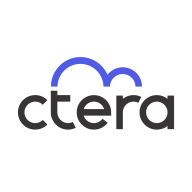

Panasas ActiveStor and CTERA Enterprise File Services Platform compete in the enterprise storage space, targeting different needs. While Panasas is noted for its high-performance data storage, CTERA's comprehensive cloud features and versatility often give it an edge in hybrid environments.
Features: Panasas ActiveStor offers high-performance storage, a scalable architecture, and is tailored for data-intensive applications. CTERA Enterprise File Services Platform focuses on cloud integration, providing a unified solution for edge-to-cloud data management, and emphasizes strong cloud-related features.
Ease of Deployment and Customer Service: Panasas ActiveStor can be complex to deploy due to its specialized infrastructure, but offers responsive customer support. CTERA Enterprise File Services Platform features a streamlined deployment process, especially in cloud environments, and focuses on ease of use and cloud facilities.
Pricing and ROI: Panasas ActiveStor usually involves a high initial investment yet offers substantial ROI for high data throughput needs. CTERA may have a lower startup cost due to cloud efficiencies and provides excellent ROI through flexible deployment and maintenance savings.

The CTERA Enterprise File Services Platform provides a cloud-native global file system over public and private object storage, revolutionizing the world of hybrid cloud data solutions. Enhanced by a rich data services ecosystem, CTERA enables enterprises to gain full control of their data for optimal edge performance, data insight, and governance. The platform focuses on security, providing features like data encryption, access controls, and ransomware protection. Centralized management tools enable efficient data control and monitoring. The platform is being used to replace legacy NAS and file servers, especially at remote locations, and simplify backup and disaster recovery of file data while providing the flexibility of multi-cloud deployments with infinite scalability. CTERA is at the core of hybrid cloud transformations of some of the world’s largest banks, healthcare organizations, global media groups, and government agencies, in deployments that scale to tens of petabytes.
In our most recent product, the ActiveStor Ultra, Panasas has developed a new approach called Dynamic Data Acceleration Technology. It uses a carefully balanced set of HDDs, SATA SSD, NVMe SSD, NVDIMM, and DRAM to provide a combination of excellent performance and low cost per terabyte.
• HDDs will provide high bandwidth data storage if they are never asked to store anything small and only asked to do large sequential transfers. Therefore, we only store large Component Objects on our low-cost HDDs.
• SATA SSDs provide cost-effective and highbandwidth storage as a result of not having any seek times, so that’s where we keep our small Component Objects.
• NVMe SSDs are built for very low latency accesses, so we store all our metadata in a database and keep that database on an NVMe SSD. Metadata accesses are very sensitive to latency, whether it is POSIX metadata for the files being stored or metadata for the internal operations of the OSD.
• An NVDIMM (a storage class memory device) is the lowest latency type of persistent storage device available, and we use one to store our transaction logs: user data and metadata being written by the application to the OSD, plus our internal metadata. That allows PanFS to provide very low latency commits back to the application.
• We use the DRAM in each OSD as an extremely low latency cache of the most recently read or written data and metadata.
To gain the most benefit from the SATA SSD’s performance, we try to keep the SATA SSD about 80% full. If it falls below that, we will (transparently and in the background) pick the smallest Component Objects in the HDD pool and move them to the SSD until it is about 80% full. If the SSD is too full, we will move the largest Component Objects on the SSD to the HDD pool. Every ActiveStor Ultra Storage Node performs this optimization independently and continuously. It’s easy for an ActiveStor Ultra to pick which Component Objects to move, it just needs to look in its local NVMe-based database.
We monitor all NAS reviews to prevent fraudulent reviews and keep review quality high. We do not post reviews by company employees or direct competitors. We validate each review for authenticity via cross-reference with LinkedIn, and personal follow-up with the reviewer when necessary.